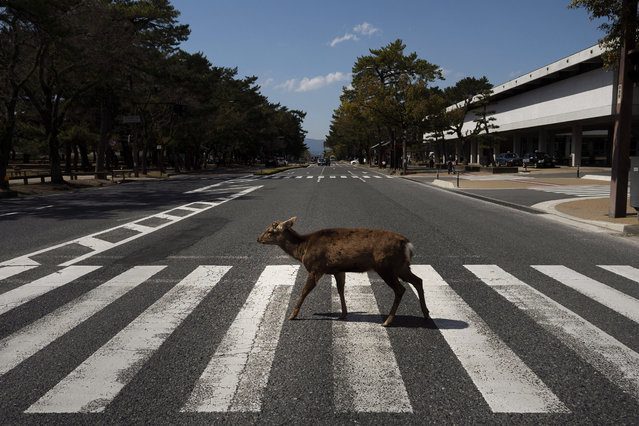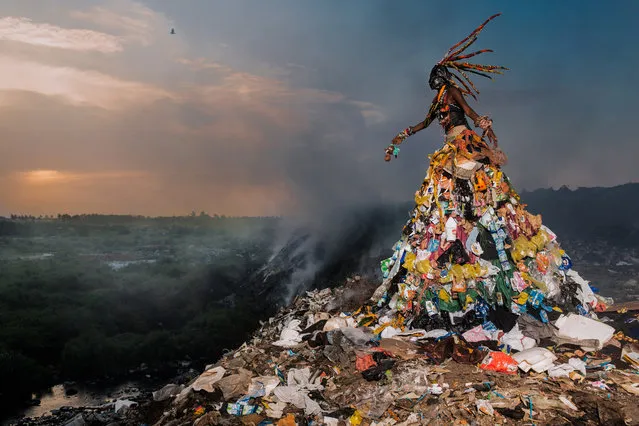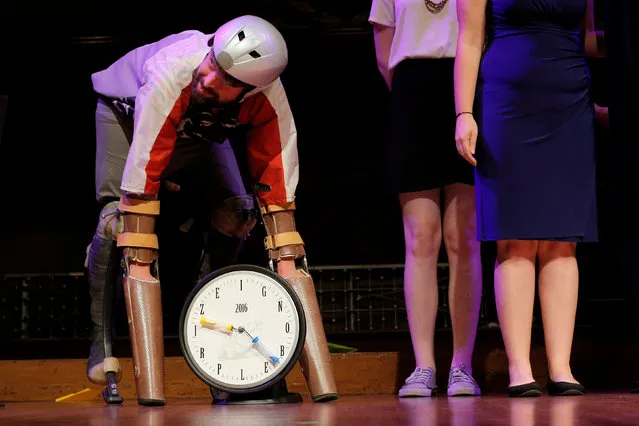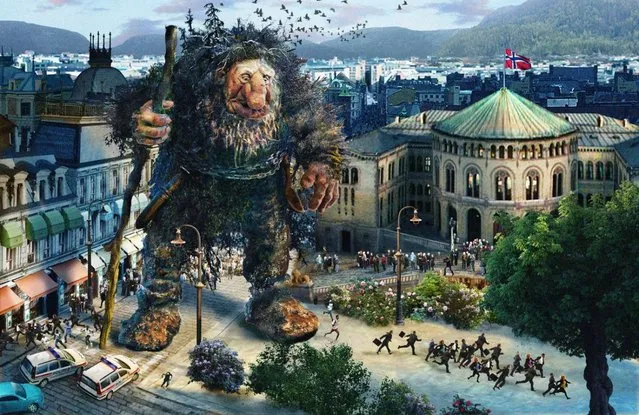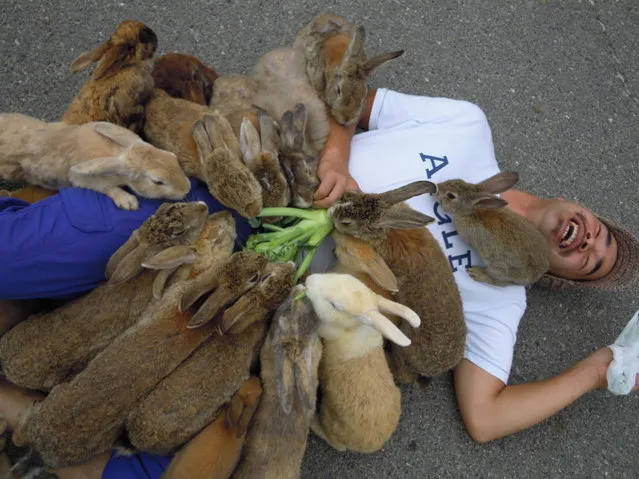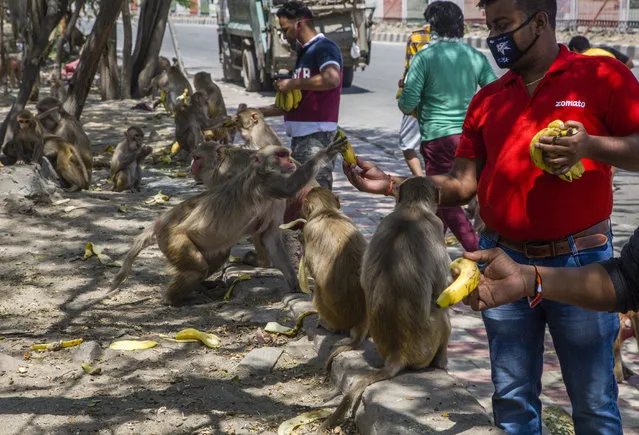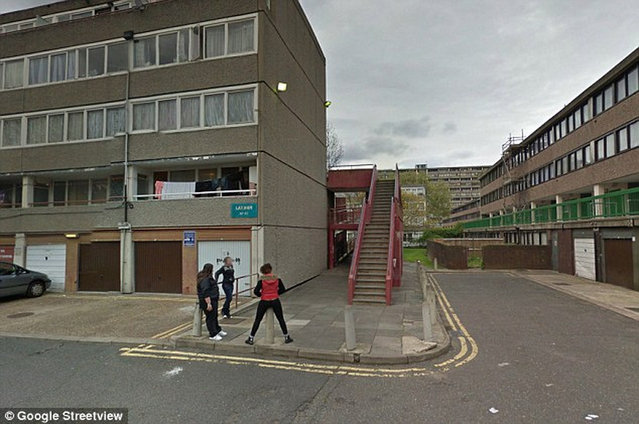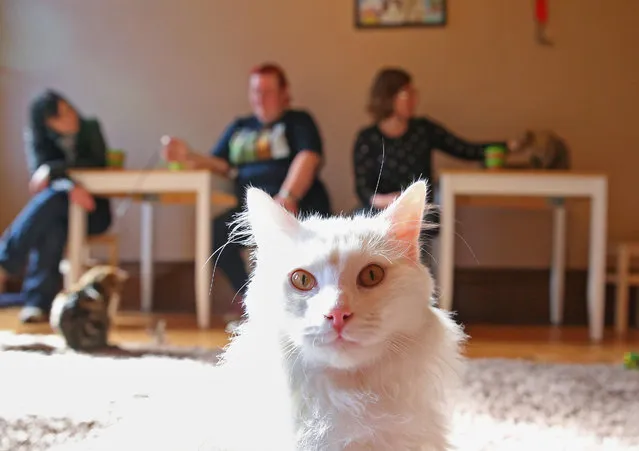
Customers drink a coffee as several cats roam at Cat Cafe Melbourne on July 25, 2014 in Melbourne, Australia. Cat Cafe Melbourne is Australias first cat cafe. The cafe has several cats from rescue shelters which live at the premises. Patrons can watch and play with the cats while enjoying a coffee. Cat Cafes are becoming known world wide, the first opening in Taiwan in 1998. (Photo by Scott Barbour/Getty Images)
27 Jul 2014 11:24:00,post received
0 comments

